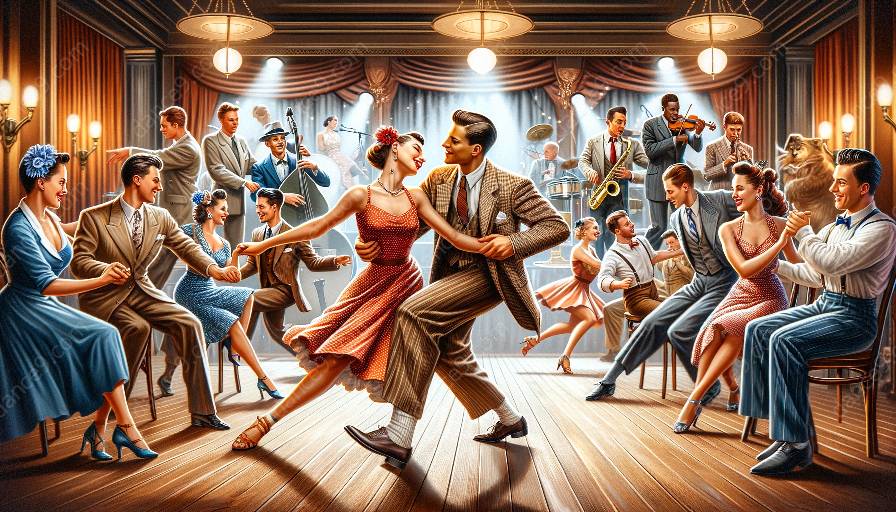Swing dance is a vibrant and energetic form of dance that has been shaped by various historical and cultural influences. From its origins in African American communities to its evolution in the jazz age and its enduring legacy in contemporary dance classes, swing dance reflects a rich tapestry of traditions, music, and social dynamics.
Origins in African American Communities
Swing dance traces its roots to the vibrant culture of African American communities in the early 20th century. It emerged as a form of social dance that allowed people to express themselves and connect with others through movement and music. The energetic and improvisational nature of swing dance resonated deeply with the rhythm and spirit of jazz music, creating a powerful synergy that continues to influence the dance to this day.
The Jazz Age and Lindy Hop
The jazz age of the 1920s and 1930s was a period of cultural effervescence and artistic innovation, and swing dance evolved alongside the groundbreaking music of the era. The emergence of the Lindy Hop, characterized by its exuberant movements and joyful expression, captured the essence of the time and spread rapidly across the United States. The Lindy Hop became a symbol of liberation and self-expression, breaking down racial barriers and bringing people together on dance floors across the country.
Global Influence and Evolution
As the popularity of swing dance grew, it transcended geographical and cultural boundaries, finding its way into dance halls and clubs around the world. It adapted to local traditions and musical styles, giving rise to regional variations such as the Jive in Europe and the Jitterbug in the United States. This global influence enriched the dance with diverse rhythms and movements, further expanding its expressive range and appeal.
Revival and Modern Interpretations
Although swing dance experienced a decline in popularity during the mid-20th century, it underwent a remarkable revival in the late 20th and early 21st centuries. Enthusiasts and dance enthusiasts rediscovered the joy and vitality of swing dance, leading to a resurgence of interest in traditional styles such as the Charleston and the Balboa, as well as the emergence of contemporary fusion forms that blend elements of swing with other dance genres.
Swing Dance in Dance Classes
Today, swing dance continues to thrive in dance classes and social events around the world. Whether learning the fundamentals of the Lindy Hop, mastering the intricate footwork of the Charleston, or exploring the dynamic rhythms of West Coast Swing, students of all ages and backgrounds are drawn to the infectious energy and creativity of swing dance. Instructors and dance schools play a vital role in preserving the historical and cultural essence of swing dance while infusing it with new perspectives and techniques, ensuring that its legacy endures for future generations.
Conclusion
The historical and cultural influences on swing dance are deeply woven into its fabric, creating a dance form that reflects the diversity, creativity, and resilience of human expression. From its humble origins in African American communities to its enduring presence in contemporary dance classes, swing dance embodies the spirit of joy, connection, and innovation that continues to inspire dancers and audiences alike.













































































